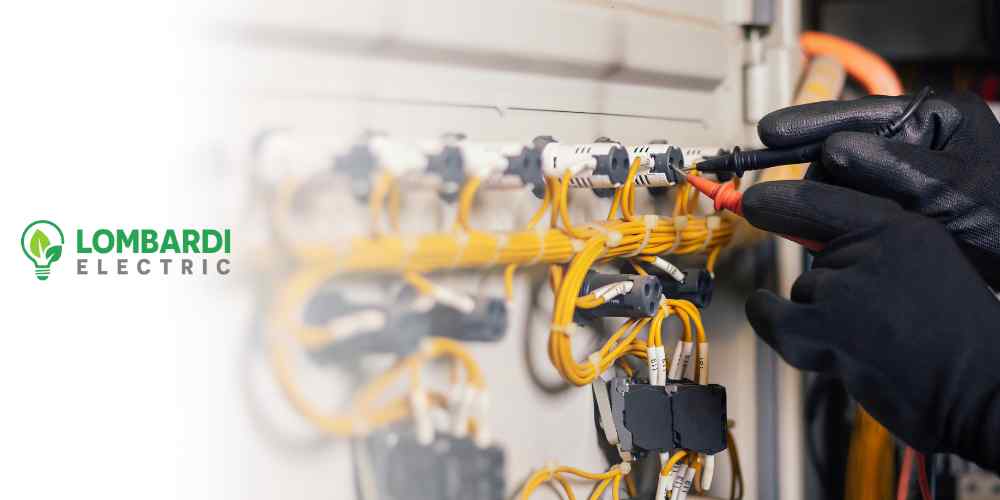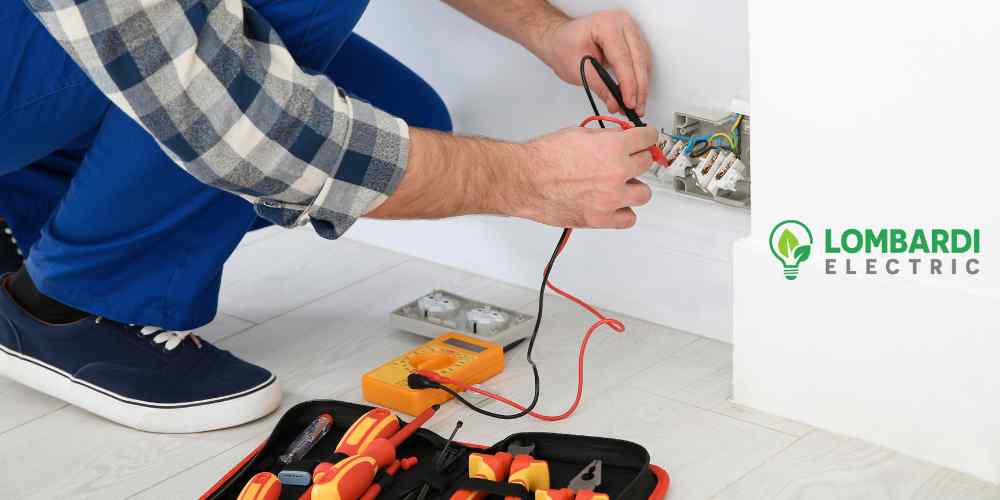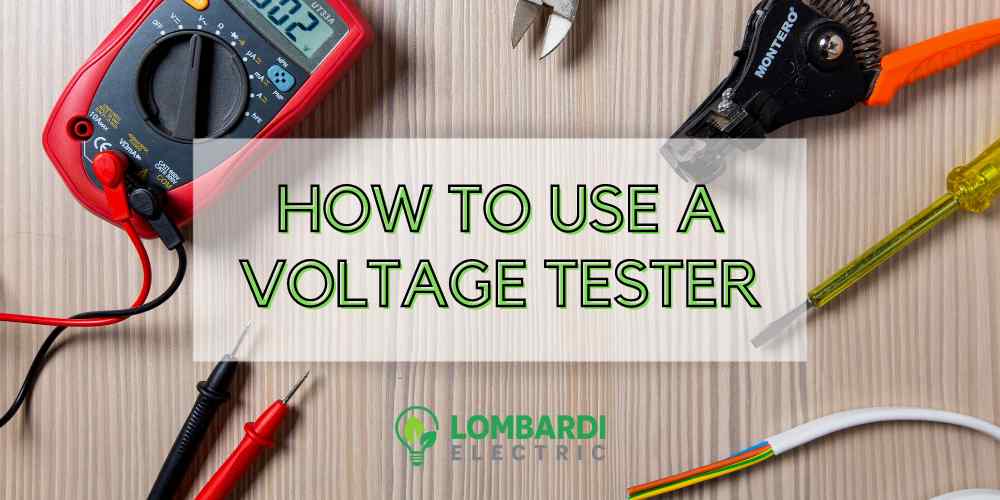Voltage testers are essential tools for anyone working with electrical systems. These electrical testers allow an electrician or family handyman to quickly and safely check for the presence of electrical current in wires, electrical devices, and circuits. When using a voltage tester, a technician can determine whether a circuit is live, which is crucial for safety and troubleshooting when working with electrical current.
For instance, when repairing a light fixture, a voltage tester can confirm via the light fixture or light switch if the fixture is receiving power and is working properly. This not only helps in diagnosing issues but also ensures that any work is done safely.
Moreover, voltage testers come in various types, from simple neon testers to more sophisticated digital models, catering to different levels of complexity and precision. Voltage testers are invaluable in ensuring electrical safety and functionality, making them a must-have in electricians and DIY enthusiasts’ toolkits.
How to Use an Electric Tester
When it comes to electrical components, safety is the top priority. Whether you’re a professional electrician, family handyman, or a DIY home electricity enthusiast, using electrical testers is crucial to ensure that electrical circuits and devices function as they should. Below, our Alexandria electricians will explore common types of electrical testers and how to use a voltage tester effectively.
Lombardi Electric promotes electrical safety as Alexandria, Louisiana’s top electrical service company. Call 318-545-7575 to schedule Alexandria electrical inspections, repairs, maintenance, and upgrades in your home or business today.
What is a Voltage Tester?
An electrical tester, also known as a voltage tester or electrical outlet tester, is a device used to check the presence of a live electrical current. A voltage tester is an indispensable tool for any family handyman, electrician, or anyone working with electrical systems. Electrical testers help ensure that wiring is de-energized before maintenance or repairs and confirm that wiring connections are secure.
Lombardi Electric understands the importance of using electrical testers properly, as they play a vital role in minimizing electrical hazards and preventing accidents.
Common Types of Electrical Testers and How to Use Them

If you’re new to the electric repair world, getting the right voltage tester and knowing how to use it properly is crucial.
Non-Contact Voltage Testers (Inductance Testers)
A non-contact voltage tester, also known as an inductance tester, is a handy tool for detecting the presence of voltage in electrical circuits without making direct contact. Using a non-contact voltage tester is a simple and safe way to check for live wires, especially when you’re unsure if there is an electrical current running.
How to Use a Non-Contact Voltage Tester
To properly use a non-contact voltage tester, follow these steps:
- Turn On the Voltage Tester: Most non-contact electrical testers have an on/off button. Turn the tester on before use.
- Approach the Circuit: Hold the non-contact voltage tester close to the wire you want to check. Be sure to keep a firm grip on the tester’s handle.
- Check for an Indicator: If it is a hot wire, the non-contact voltage tester will indicate it by lighting up, beeping, or making a buzzing sound.
- Test Different Points: To confirm the presence of voltage, test at least two points. Ensure that the circuit tester reacts consistently.
- Turn Off the Non-Contact Voltafe Tester: After use, turn off the non-contact voltage tester to conserve battery life.
Remember that a non-contact voltage tester only detects the presence of voltage or a hot wire; it doesn’t measure voltage levels. You’ll want to use a multimeter if you need to measure precisely how much voltage you have.
Neon Voltage Testers
A neon voltage tester, often called a neon circuit tester or neon test screwdriver, is a simple and cost-effective tool for identifying live electrical circuits featuring a neon bulb when detected.
How to Use a Neon Voltage Tester
To use a voltage tester like this, follow these steps:
- Check for Proper Functionality: Ensure the neon bulb on the main panel is functional before you test.
- Insert the Probe: Insert the metal probe into the electrical outlet, switch, or wire you want to test. Make sure the probe makes good contact.
- Observe the Neon Bulb: If the circuit is live, the small neon bulb will light up on the neon circuit tester, indicating the presence of voltage.
- Confirm Continuity: For outlet covers and light switches, you can use a neon voltage tester to confirm continuity by checking if the light bulb lights up when the switch is turned on.
- Turn Off the Neon Circuit Tester: After testing, turn off the neon voltage tester and remove the probe.
While neon voltage testers are relatively simple to use, they may not be suitable for all applications, especially when determining how much voltage an outlet, light switch, or wire has.
Receptacle Testers

A receptacle tester, or plug-in circuit analyzer, is designed to assess outlets’ electrical wiring and safety. Receptacle testers provide information about whether an outlet is wired correctly, has a ground fault, or if ground wires are properly grounded. They’re perfect for areas that show signs of faulty electrical wiring.
How to Use a Receptacle Tester
To test electrical outlets with a receptacle analyzer, follow these steps:
- Plug It In: Insert the receptacle tool into the electrical outlet you want to test.
- Observe the Tester Lights: The analyzer will have a series of indicator lights or an LCD display that provides information about the outlet’s wiring status.
- Correct Wiring: If all the lights are green, it indicates correct wiring.
- Reversed Hot and Neutral Wires: The red light during the test may indicate reversed hot and neutral wires. We discuss neutral wires more here: What is a neutral wire?
- Open Hot: An open ground is indicated if the amber light is on.
- Hot/Ground Wire Reverse: The red and amber lights simultaneously may signify a hot wire and ground wire reverse issue.
3. Test GFCI Outlets: If you’re testing a GFCI (Ground Fault Circuit Interrupter) outlet, press the “Test” button on the GFCI itself. The tester should indicate that the GFCI function is working correctly. To learn more about GFCI outlets, visit ‘What is a GFCI outlet?’
4. Remove the Analyzer: Remove the tester from the outlet after testing.
Testers are invaluable tools for ensuring the safety of electrical outlets in homes and businesses. Using an electrical outlet tester regularly can help prevent electrical shocks and fires caused by faulty wiring.
Continuity Testers
A continuity tester is used to check the continuity of electrical paths in circuits. It helps ensure that wires and connections are intact and free of breaks or open circuits.
How to Use a Continuity Tester
To use a continuity tester, follow these steps:
- Turn Off the Power: Before testing continuity, always ensure that the power to your testing component is turned off.
- Set Up the Continuity Tester: Connect one lead of the continuity tester to one end of the wire you want to test. Connect the other lead to the opposite end.
- Check the Indicator: If it is a complete circuit (i.e., there are no breaks or open paths), the continuity tester will produce a visual or audible indicator, such as a light or a beep.
- Identify Breaks: If there is a break in the circuit, the continuity tester will not produce an indicator, meaning there is no continuity at that point.
- Trace the Issue: If you encounter a break, use the continuity tester to trace the circuit and identify where the issue lies. This can be especially helpful when troubleshooting electrical problems.
Continuity testers are invaluable for electricians and technicians when troubleshooting electrical circuits, identifying faulty wires, or ensuring the integrity of connections in a circuit.
Multimeters
A multimeter, also known as a volt-ohm meter (VOM), is one of the most versatile and essential tools for electrical testing. Most multimeters can measure various electrical parameters, including voltage, current, resistance, and continuity. Most electricians use this to determine line voltage vs low voltage.
How to Use a Multimeter
Follow these steps to use a multimeter properly:
- Select the Mode: Set the multimeter to the mode you want to use.
- Turn Off the Power: Always ensure the circuit is de-energized before measuring.
- Connect the Leads: Plug the red probe into the “VΩmA” port and the black probe into the “COM” port on the multimeter.
- Measure Voltage: To measure voltage, connect the red probe to the circuit’s hot (live) wire and the black probe to the neutral wire or ground. The multimeter will display the voltage level.
- Measure Resistance: Disconnect the component or wire from the circuit to measure resistance. Connect the tester leads to both ends of the component or wire.
- Check Continuity: Set the multimeter to the continuity mode. Touch the metal probes together. If there is continuity, the multimeter will beep.
- Turn Off the Multimeter: After testing, turn off the multimeter to conserve battery life.
Call Lombardi Electric Today
At Lombardi Electric in Alexandria, Louisiana, we understand the critical importance of electrical safety and the proper use of electrical testers. Whether you’re the designated family handyman in your home or a business owner needing electrical services, our team of skilled electricians is here to help. We prioritize safety and quality in all our electrical work.
By following these instructions, you can use a voltage tester effectively to minimize the risks associated with electrical work. However, it’s important to remember that electrical work can be complex and hazardous. When in doubt, consulting with a professional electrician at Lombardi Electric is always a good idea.
Call Lombardi Electric today at 318-545-7575 for all your electrical service needs. We offer Alexandria electrical services, Alexandria commercial electrical services, and Alexandria industrial electrical services. Your safety is our priority, and we’re here to keep your home or business powered and secure for years to come.

